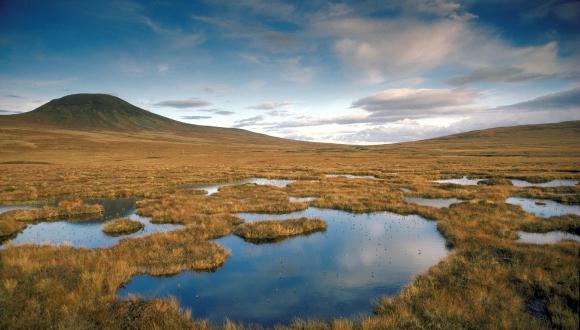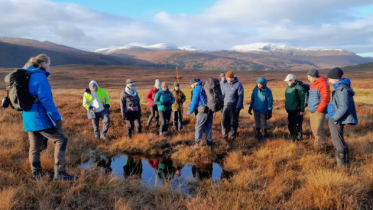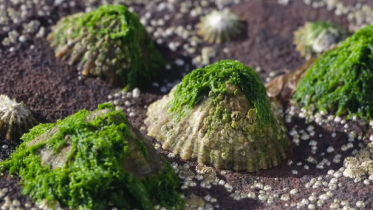
Management of wet habitats
Many wet habitats, seen as unproductive, were drained to try to increase livestock and game numbers. Rewetting is now common.
Scotland has vast areas of wet ground. While we don’t suffer the water shortages that afflict much of the world, our bogs, fens and swamps limit our land use options. Most wet ground isn’t very productive for crops and livestock, and grouse also prefer dry ground much of the time.
However, NatureScot and others strongly discourage the digging of new drains in our remaining wetlands. Large-scale drainage efforts in the past have had limited benefits. Drainage has also caused problems for our biodiversity, water quality and carbon storage.
Drain blocking is now a major part of several habitat restoration projects. It’s also an option for Scottish Rural Development Programme support.
Wetlands benefits
Scotland’s peatlands hold around 1.6 billion tonnes of carbon in total. The deeper the peat soil, the more carbon it stores. Active peatlands capture about 0.25 tonnes of carbon per hectare each year if undisturbed.
We have well over 1 million hectares of bog – that’s more than one-eighth of Scotland’s total land area. Most of this is blanket bog, and there are also lowland raised bogs.
Wet habitats are important for the plants and animals they support, some of which are found nowhere else. They are also important in storing water and controlling flow. Our bogs are where we find peat, which is valuable both in soil carbon management and in flavouring whisky.
Scotland has so much wet ground because its:
- position at the edge of the Atlantic Ocean means we get a lot of rain
- rocks, soils and landforms stop rainwater from draining away quickly
Peat develops in these regularly waterlogged conditions and in turn holds more water. Bog plants thrive, and so more peat is laid down.
Restoration funding:
Peatland ACTION is helping to restore damaged peatlands across Scotland. If you have a peatland restoration project that you think might be eligible for funding and would like to speak to one of our advisors please contact us at [email protected]
Past drainage efforts
Our peatlands and other wetlands were drained extensively in the past to increase agricultural and sporting output. Government funding in the post-war years supported a great deal of this, as a way to increase food production.
Much of this effort was in vain. The expected agricultural benefits were never really realised – partly as rainfall soaked the ground again as quickly as water was drained away.
Healthy peatlands:
- benefit biodiversity – as an internationally important wildlife habitat;
- regulating atmospheric pollutants - by absorbing pollutants such as sulphur dioxide, nitrogen and heavy metals;
- improve water quality – by reducing the amount of carbon in water, which results in water discolouration and requires extra treatment before it comes through our taps;
- reduce flooding – by regulating run-off and maintain base flows in upland streams during dry spells;
- support our economy – whether used in farming, tourism or crafting, or by indirectly benefiting whisky production and fisheries;
- shape our landscapes – enabling recreation and improving our quality of life;
- reveal our past – pollen, plant and insect remains can be studied to tell us about past changes in climate, environment and vegetation.
Degraded bogs emit carbon dioxide and other greenhouse gases, which contribute to climate change. To prevent damage, overgrazing and practices that require drainage of peatlands must be avoided.
Restoring peat-forming habitat previously drained or damaged by re-wetting and ultimately reconnecting peatlands to their catchments ensures that the bog remains a long-term carbon sink rather than a greenhouse gas source.
Land managers can learn how to assess the health of peatlands using the Peatland Condition Assessment support tool.





